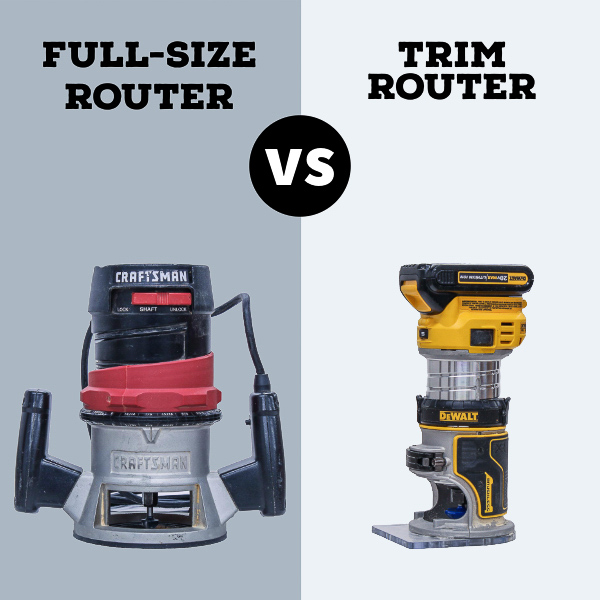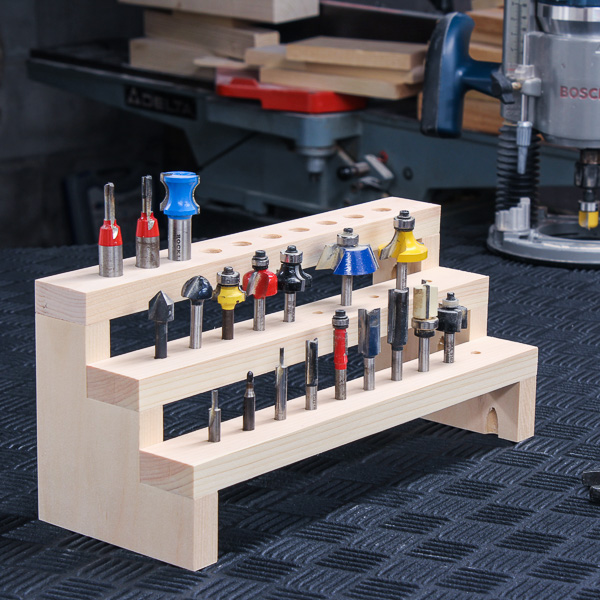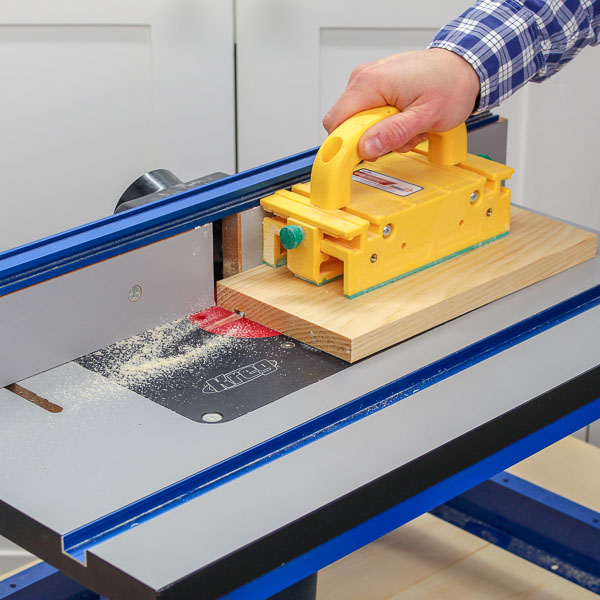Plunge Router vs Fixed-Base (Which is Right for You?)
Unsure if you need a plunge or fixed base router? Discover the differences between them and find the right tool for your woodworking projects.
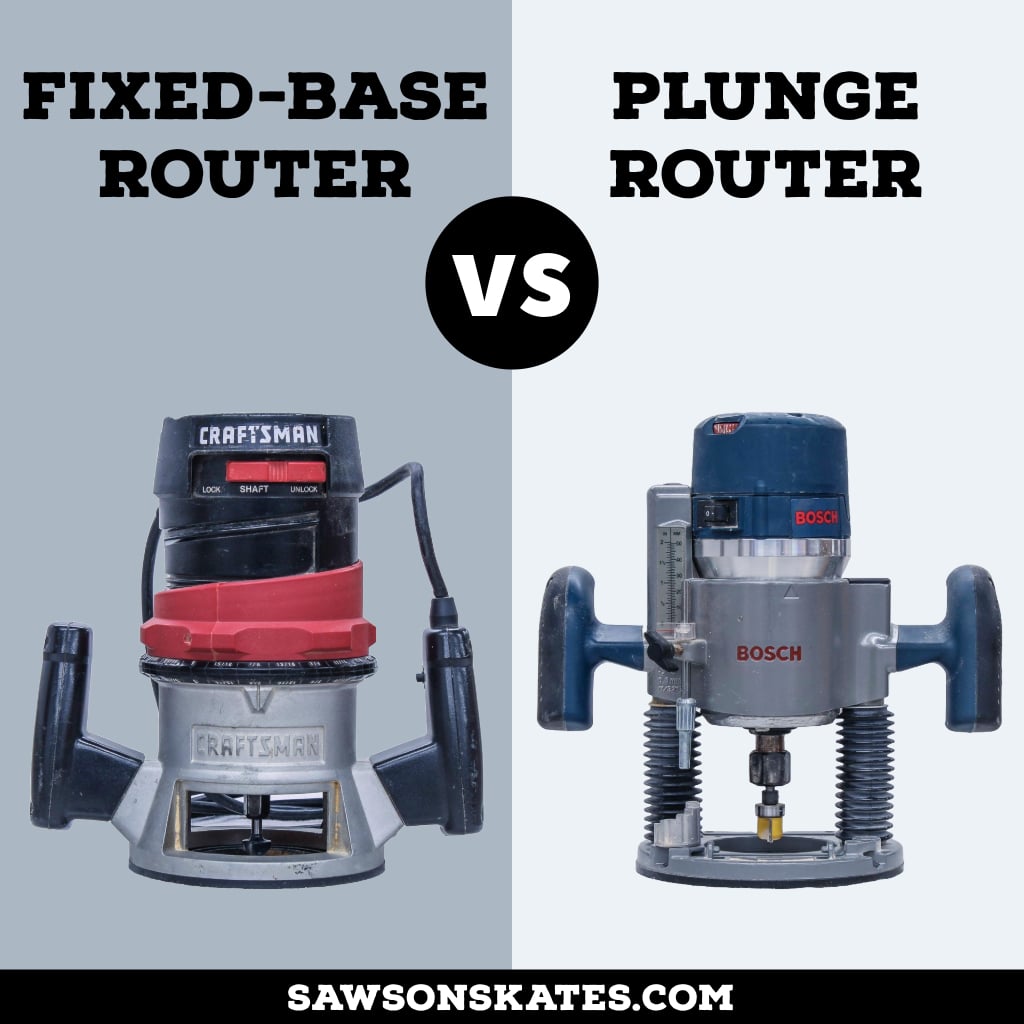
Are you feeling overwhelmed in the router aisle? Choosing between a plunge router and its fixed-base cousin can leave almost any woodworker scratching their head.
- Which is better for creating a decorative profile on the edges of boards?
- Which is better for adding inlays in the middle of a workpiece?
I’ll cut through the confusion, comparing their similarities, differences, and common uses. Prepare to shape your projects with precision and leave indecision in the dust.
Table of Contents
- What is a Plunge Router?
- What is a Fixed Base Router
- What’s the Difference Between a Plunge Router and a Fixed Base?
- Should I Buy a Fixed Base or Plunge Router?
This article contains affiliate links. If you purchase from these links, I may earn a small commission at no additional cost to you. Visit my site policies for more information.
What is a Plunge Router?
A plunge router boasts a unique feature that sets it apart from its fixed base counterpart: the ability to vertically lower its spinning bit into a workpiece. This spring-loaded mechanism allows you to create cuts in the middle of a board, unlike a fixed base router, which requires starting at the edge.
Let’s break down a plunge router’s key features and see how this versatile tool can elevate your woodworking projects.
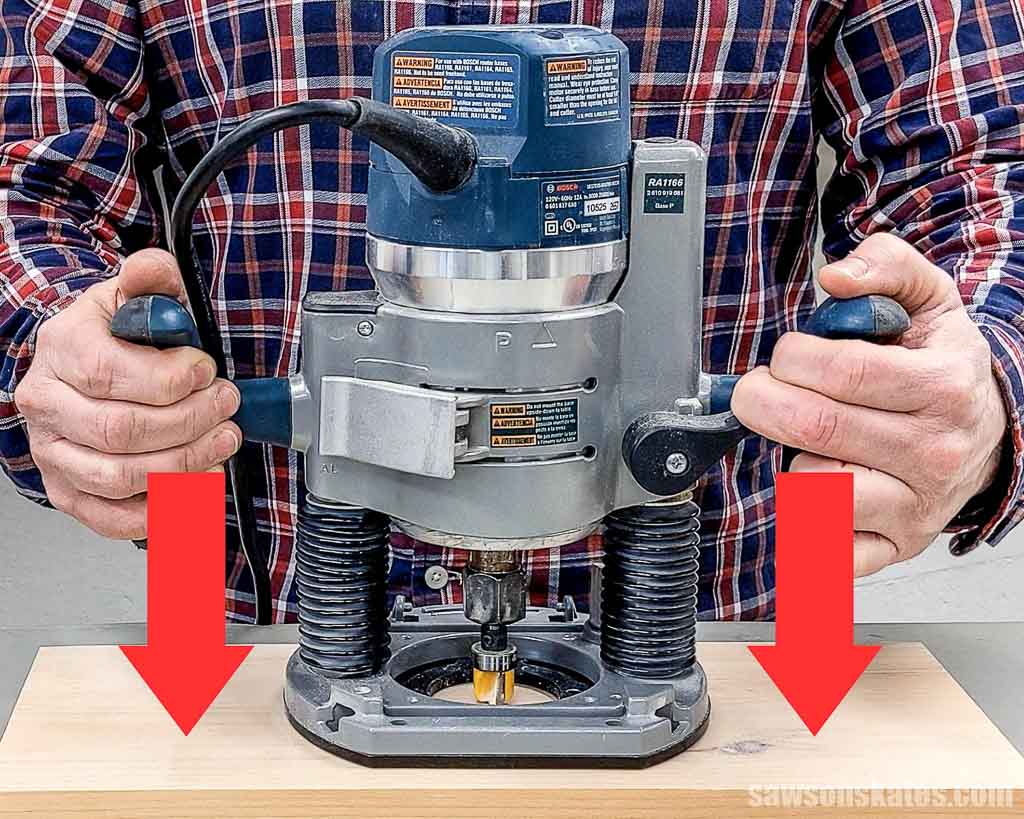
Spring-Loaded Motor Housing:
A plunge router’s defining characteristic is its plunge base, consisting of spring-loaded columns that enable you to lower the router bit into the material vertically.
This controlled downward movement lets you make cuts starting in the middle of the workpiece, such as mortises or grooves for inlays and decorative elements.
Depth Adjustment Mechanism:
Plunge routers have a depth rod allowing you to precisely set the cutting depth before plunging, ensuring consistent results.
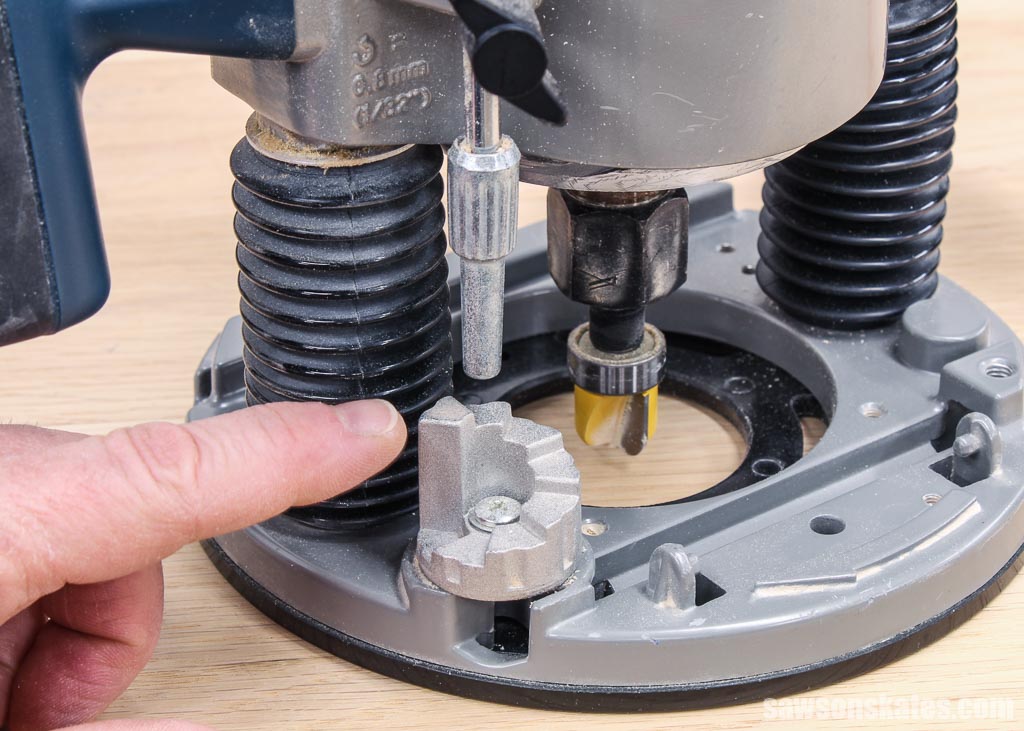
Some models also have depth stops that let you quickly switch between preset depths, further streamlining your workflow.
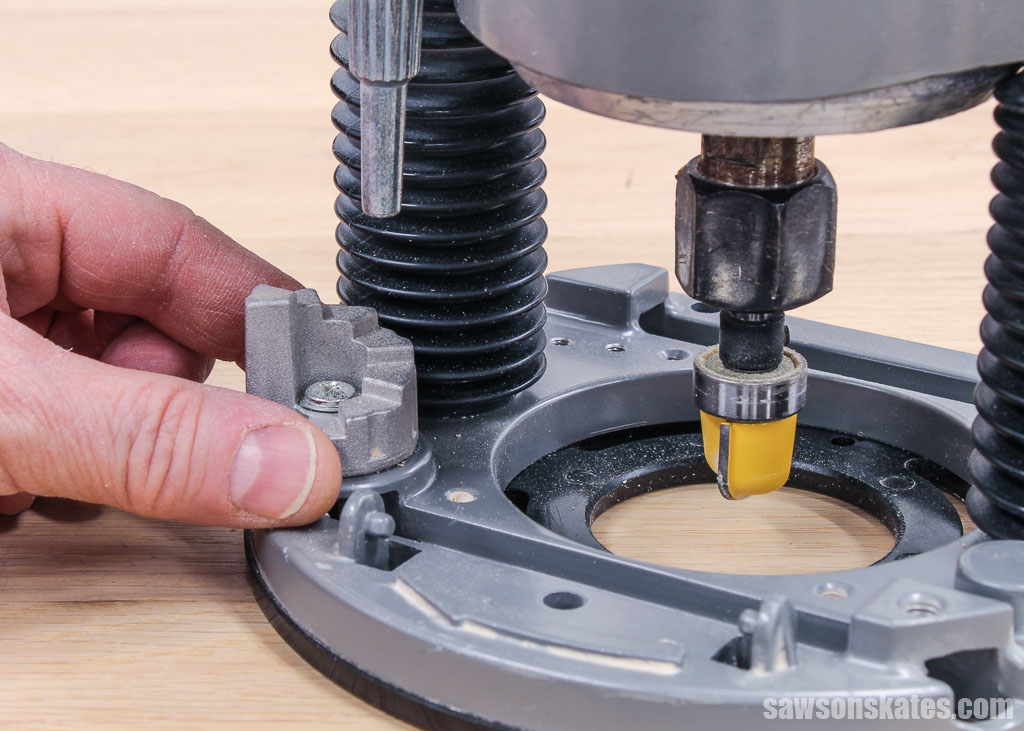
Locking Mechanism:
The locking mechanism secures the motor housing at your desired depth, ensuring consistency throughout your cut.
Versatility
Dedicated plunge routers are available; however, more expensive models come with a plunge and fixed bases. The fixed base offers stability for tasks like edge routing, while the plunge base provides the flexibility for more intricate work.
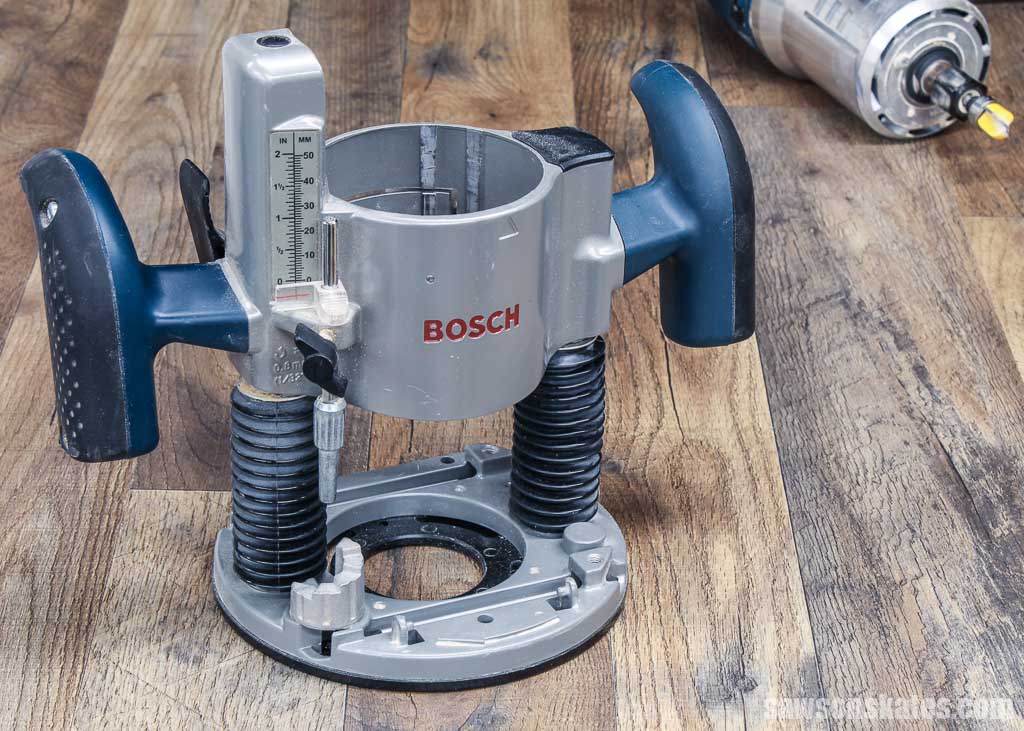
What are Plunge Routers Used For?
Plunge routers excel in various tasks thanks to their unique ability to lower the bit into the material. Here are some common uses:
- Mortises: The controlled plunging enables you to make mortises in the middle of a board. Like a rectangular socket, a mortise receives a matching protrusion called a tenon, creating a strong, traditional woodworking joint.
- Inlays and decorative elements: You can precisely plunge-cut intricate outlines and shapes for inlays and decorative borders.
- Juice grooves: You can use a plunge router to create juice grooves on cutting boards.
- Repairing damaged wood: Precise plunge cuts can help remove damaged sections and prepare for repairs.
- Signmaking: Carving letters and intricate designs in wood for signs and logos.
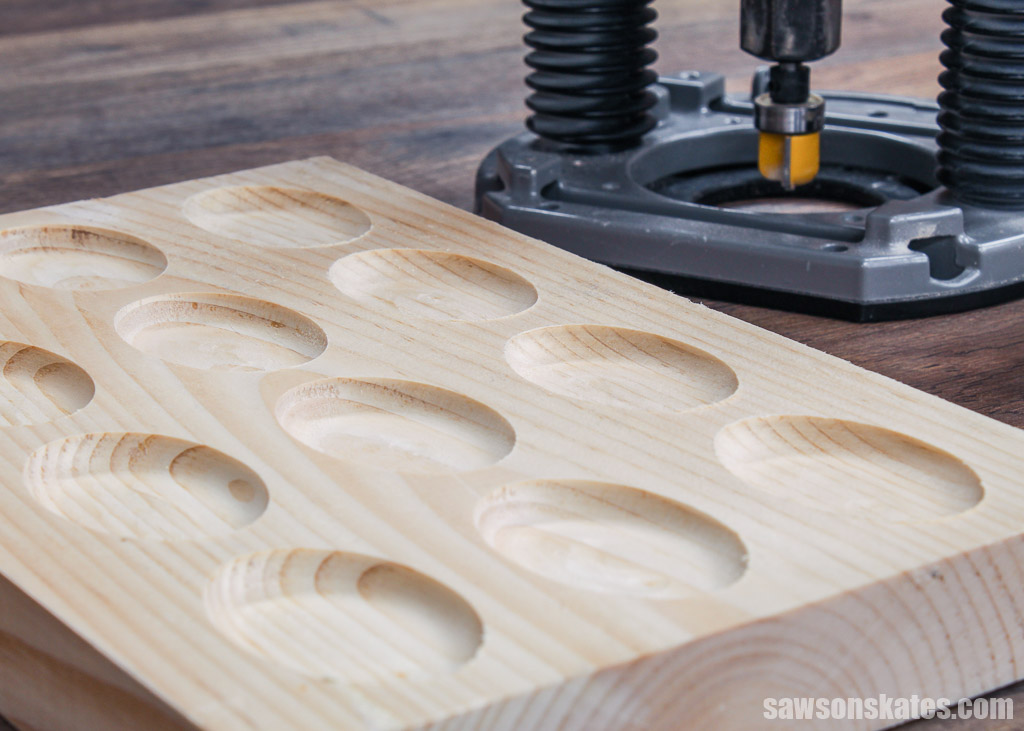
What are the Pros and Cons of Plunge Routers?
Advantages of a plunge router:
- Versatility: Lowering the router bit into the material opens up a wider range of uses than a fixed-base router. You can make cuts in the middle of a board, create mortises, intricate inlays, decorative elements, and more.
- Precision: The adjustable depth control and ability to plunge vertically enable precise and controlled cuts, especially for tasks like making mortises where accuracy is crucial.
- Flexibility: Many plunge routers come with both a plunge and a fixed base, allowing you to switch between them depending on the project.
- Control: The controlled plunge action allows for smooth entry and exit points, which is beneficial for freehand routing and template work.
Disadvantages of a plunge router:
- Cost: Plunge routers are often more expensive than fixed-base routers due to their additional functionality.
- Complexity: The plunge mechanism and additional adjustments can make using them slightly more complex than fixed-base routers, especially for beginners.
- Bulkier: The plunge mechanism adds bulk, which might make it less maneuverable for specific tasks compared to a fixed-base router.
- Less ideal for some edgework: While you can use a plunge router for edgework, a fixed-base router might be easier and more convenient for some tasks like trimming or profiling edges.
- Learning curve: Mastering the plunge technique and adjustments might require some practice, especially for intricate cuts.
What is a Fixed Base Router?
Unlike its plunging counterpart, a fixed base router has a stationary motor housing, adjusting the cut’s depth by raising or lowering the bit within the base. While you can lower a plunge router downward into the middle of a workpiece, a fixed router’s protruding bit typically requires you to start cutting on its edge.
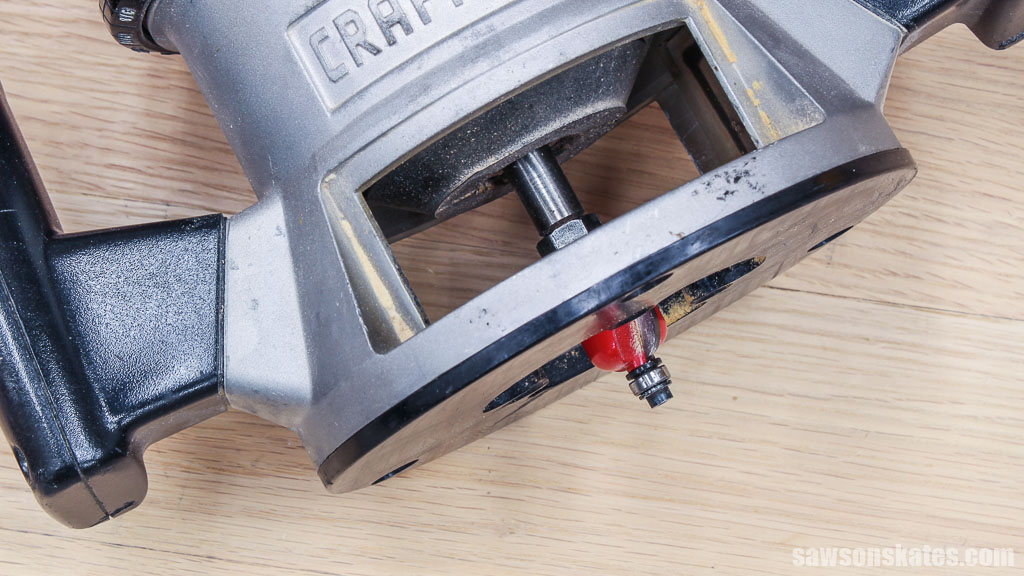
Here’s a breakdown of a fixed base router’s key features:
Fixed Base
- Unlike a plunge router, a fixed-base router has a non-adjustable base that holds the motor and router bit at a predetermined depth. This base usually sits flat on the workpiece, with the bit protruding through a hole for routing.
- A fixed base is ideal for tasks where consistent depth is essential, such as edge trimming, rounding, and profiling.
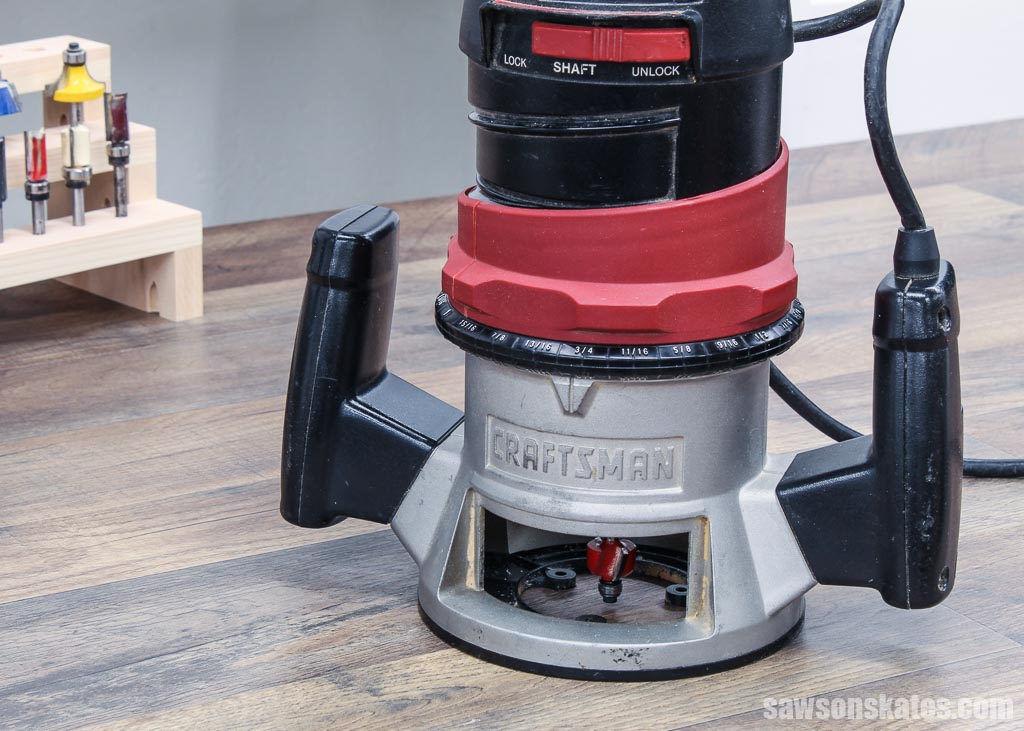
Easy Depth Adjustments
- While the base itself is fixed, most fixed-base routers have a mechanism for adjusting the overall depth of the cut, which usually involves turning a knob or lever or rotating the motor within the base up or down, raising or lowering the bit.
Stability and Ease of Use
- The fixed base provides stability due to its rigid design, making it easier to control and achieve straight, consistent cuts, especially for edge work.
- Additionally, the fixed depth eliminates the need for precise plunge control, making it a more user-friendly choice for beginners.
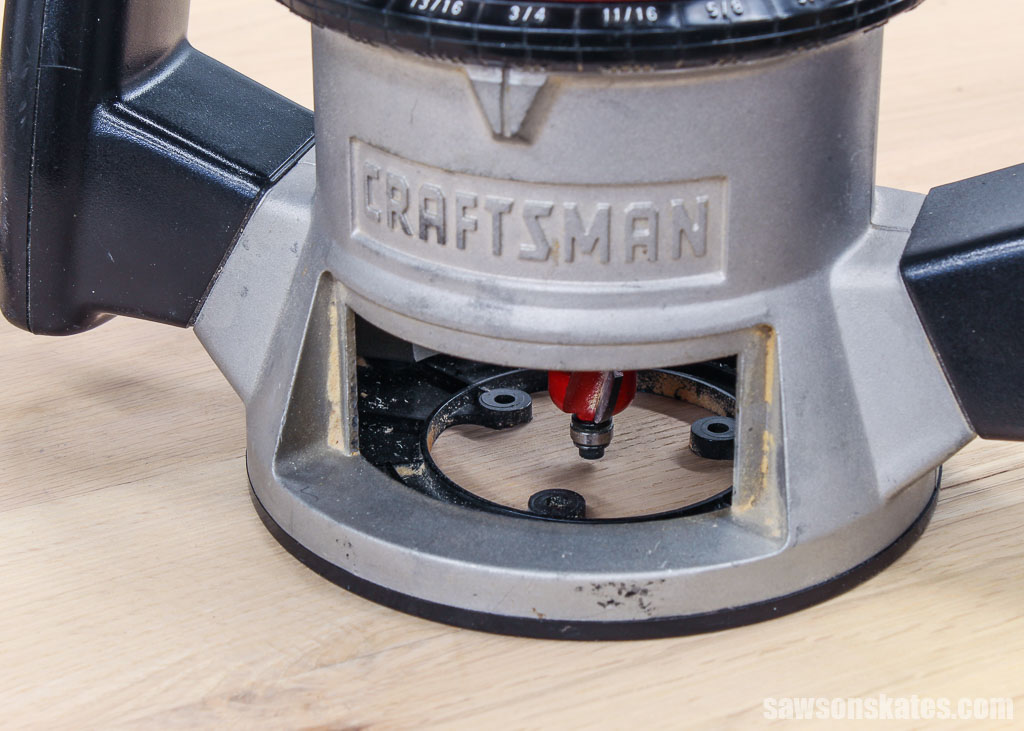
Lightweight and Compact
- Fixed-base routers are generally lighter and more compact than plunge routers, making them easier to handle and maneuver, especially for smaller projects or long stretches of edge routing.
Affordable Option
- Fixed-base routers are typically more affordable than plunge routers, making them a great option for beginner woodworkers or those primarily focusing on edge routing tasks.
What are Fixed Routers Used For?
Fixed-base routers excel in specific woodworking tasks requiring stability and consistency. Here are some of their most common applications:
- Trimming edges: Fixed-base routers are perfect for neatly trimming laminate countertops, creating clean, finished edges.
- Edge profiling: With dedicated edge bits, you can achieve various decorative profiles like roundovers, curves (ogee), and chamfers for furniture or trim pieces. For example, I used a roundover bit on the edges of this kitchen shelf and a chamfer bit on the top of this trash bag dispenser.
- Fluting: Create decorative grooves and fluting on furniture legs, cabinet doors, and other projects for added visual interest.
- Dados: Grooves cut across the grain for joinery or fixed shelves.
- Rabbets: A fixed-base router can cut rabbets, recesses in the edge of a board. For example, I created a rabbet in this picture frame and this storm window to hold the glass.
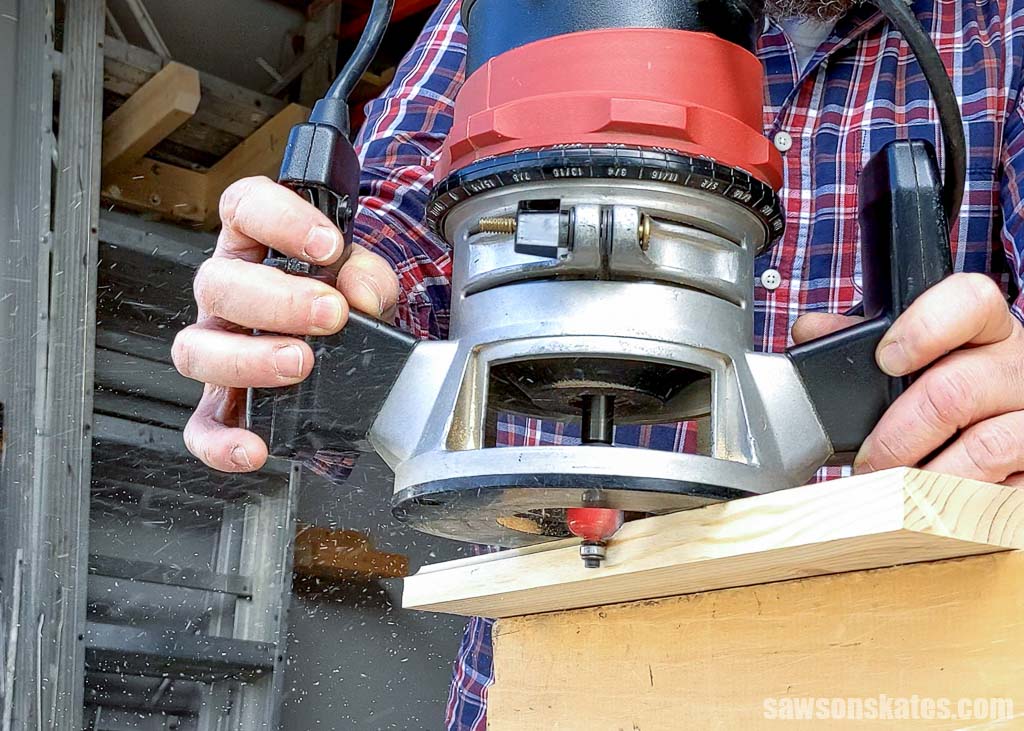
What are the Pros and Cons of a Fixed Base Router?
Advantages of a Fixed Base Router:
- Ease of use: The simple design and lack of a plunge mechanism make them easier to learn and operate.
- Stability and control: The fixed base offers exceptional stability for edge routing tasks, providing a predictable and comfortable experience.
- Consistent depth: Makes it ideal for tasks like edge trimming and profiling.
- Cost: Fixed-base routers are generally more affordable than plunge routers, making them a budget-friendly option for beginners.
- Compact and lightweight: Fixed-base routers are usually lighter and smaller, making them easier to handle and maneuver.
Disadvantages of a Fixed Base Router:
- Limited versatility: Not the best choice for tasks requiring plunging into the middle of a workpiece like inlays or repairing wood.
What’s the Difference Between a Plunge Router and a Fixed Base?
Now that we’re familiar with the basics let’s compare fixed base and plunge routers side by side. While these routers share similarities, the key differences are their capabilities, versatility, size, ease of use, and cost.
Capabilities
- Fixed Base: A fixed-base router has a non-adjustable base that holds the router bit at a constant depth, making them ideal for tasks where precise depth control is crucial, like trimming laminate, making rabbets and dados, and adding decorative profiles to the edges of boards such as roundovers and chamfers.
- Plunge: A plunge router, on the other hand, features a spring-loaded base that allows you to lower the router bit into the material from above, making it better suited for tasks like mortising, inlays, repairing damaged boards, and adding juice grooves to cutting boards, where you need to start the cut in the middle of the workpiece.
Versatility
- Fixed-base routers: Typically require you to start cutting on a workpiece’s edge.
- Plunge routers: Versatile tools tackling more than just plunge cuts. They can even double as fixed-base routers by locking the plunging mechanism.
Size
- Fixed-base routers: More compact and lightweight, making them easier to handle and maneuver.
- Plunge routers: Generally larger and heavier than fixed-base routers due to their plunging mechanism.
Ease of Use
- Fixed-base routers: Typically easier to set up and use, especially for beginners. Their simple design makes them straightforward to adjust and operate.
- Plunge routers: Have a steeper learning curve due to the additional control required for plunging the bit.
Cost
- Fixed-base routers: Typically more affordable than plunge routers due to their simpler design.
- Plunge routers: Tend to be pricier due to the added complexity of the plunge mechanism. However, budget-friendly plunge routers are available for hobbyists.
Should I Buy a Fixed Base or Plunge Router?
Choosing between a plunge router and a fixed-base router can be a head-scratcher. Both have strengths and weaknesses, and the best choice will depend on your needs. To help you make the right decision, let’s break down what to consider:
Your Skill Level
A fixed base router might be a better starting point if you’re new to woodworking. Its straightforward design and easier depth adjustments make it more user-friendly. You can focus on mastering basic techniques like adding decorative edge profiles and creating simple grooves before venturing into plunge-specific applications.
As your skills grow, you’ll likely be drawn to the plunge router’s versatility, allowing you to tackle more complex tasks like mortise and tenon joinery and intricate inlay work.
Project Types
Edge Work: A fixed base router is ideal for trimming edges or creating decorative profiles; its stable base and precise depth control ensure consistent, clean cuts.
Plunge Cuts: A plunge router is essential if your projects involve lowering the bit into the material, like creating cutting board juice grooves or decorative inlays. Its ability to precisely control the cut’s depth makes these tasks a breeze.
Budget
Fixed Base Routers: Generally, fixed base routers are more affordable than their plunging counterparts, making them a budget-friendly option for beginners or those primarily focusing on edge work.
Plunge Routers: The added functionality of plunge routers comes at a price. They tend to be more expensive than fixed-base models.
Additional Considerations
Versatility: If you anticipate tackling a wide range of projects in the future, a plunge router with a fixed base attachment might be the best investment. This way, you get the best of both worlds.
Verdict
Ultimately, the best router for you depends on your individual needs and woodworking goals. Consider your skill level, the types of projects you plan to tackle, and your budget to make before making a decision.
If you’re a beginner looking for a simple and affordable router for basic edge work, a fixed-base router might be a better choice. However, if you want a tool that can handle a wider range of projects, a plunge router is a worthwhile investment.
A fixed-base router is an excellent choice for tasks like edge trimming, rounding, and shaping, with its stability, ease of use, and lightweight design.
Final Thoughts
In conclusion, both plunge and fixed-base routers have their pros and cons. A fixed base router is ideal for beginners or those primarily routing edges and dados, while a plunge router offers more versatility and is better suited for intricate projects. Consider your needs, skill level, budget, and future project plans to determine which type of router will best fit your needs.
Interested in woodworking but need help figuring out where to start? Join the FREE Saws on Skates® Beginner Woodworking VIP list and gain instant access to top-notch tool comparisons, tool tutorials, and free woodworking plans. Join for FREE now!

